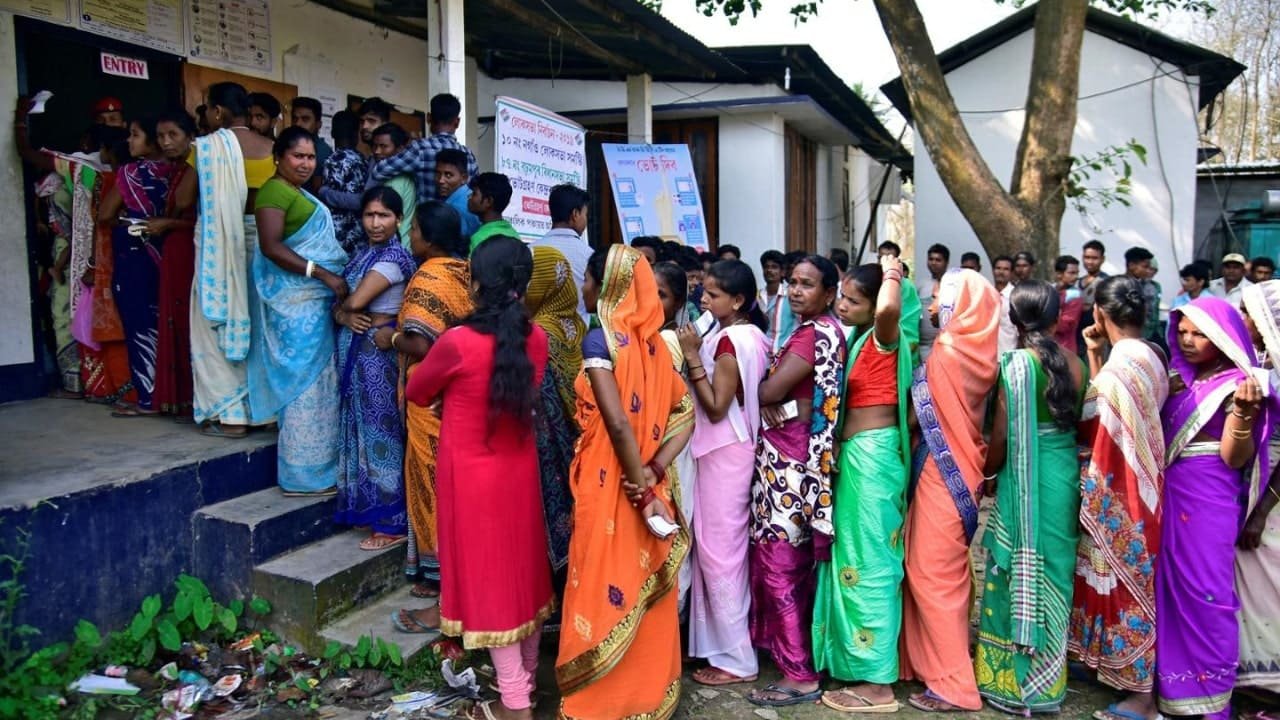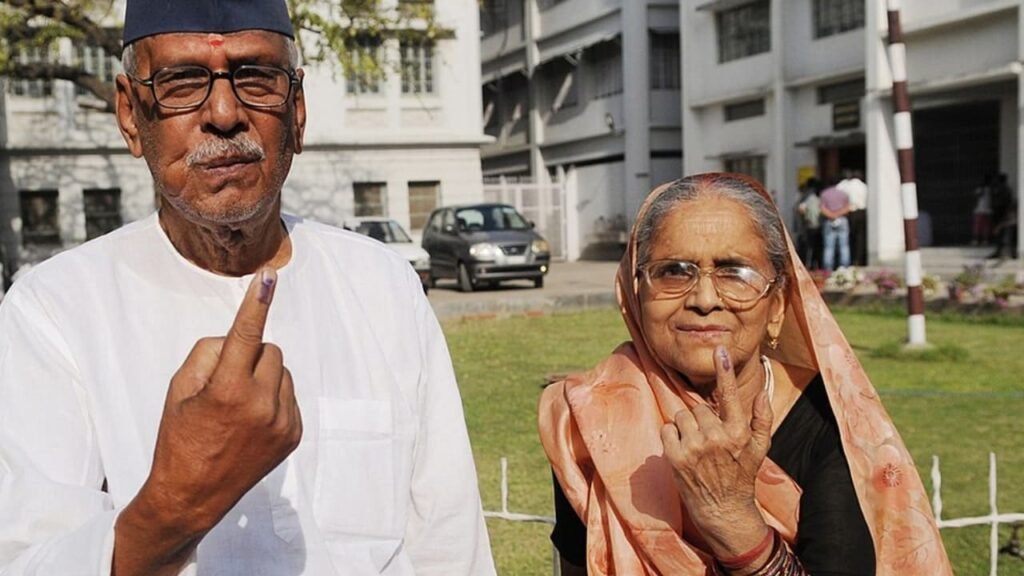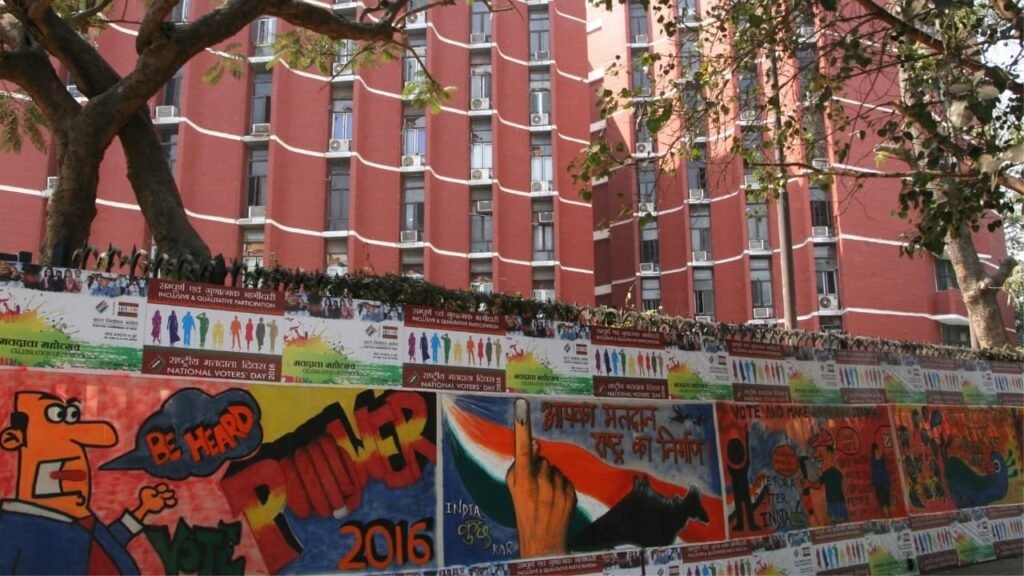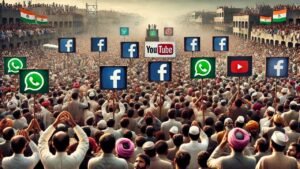
Table of Contents
Did you know, India was among the first countries to let women vote?
Indian democracy was never about just elections. It existed way before the British invaded India. It’s not a tale of post-colonial triumph but a system that dates back millennia. Yes, millennia!
Right from the ancient assemblies discussed in revered texts, India was pioneering inclusivity, letting women cast votes when in other parts of the world, they were barely allowed to voice opinions in public.
From then to today’s vast electoral system, the history of Indian democracy and its journey is nothing short of epic.
The Roots of Indian Democracy
Be honest here. Didn’t you think democracy is a Western invention?
Democracy is not a Western concept. Well, not entirely.
Long before we were introduced to Western democracies as a form of government, India had its democratic governance.
India’s democratic spirit did not start after independence, it started long before. The roots of our version of democracy can be traced back to Sabha and Samiti in ancient India. These early forms of democratic assemblies, prevalent in the Vedic age, allowed public participation in decision-making. Whereas Sabha was a council of elders, Samiti was a general assembly of the people. Together, these institutions reflect the ethos of democracy for they allow the citizens to voice their opinions and take part in governance.
These early democratic gatherings were instrumental in making significant political decisions. They had the power to make or break kings and policies. Think of them as the boardrooms of yore, where both sages and commoners discussed various issues, including governance.
Fast forward to the present, the scope of democracy in India broadened significantly over the century. Early adoption of voting rights for women? Check! For India, the progressive move came long before many other nations.
This is a testament to the adaptive features of Indian democracy, ensuring that every voice, regardless of gender, could echo in the corridors of power. Democracy here means every person’s opinion matters, whether voting for the nation’s leader or a local village head.
Structure of Modern Democracy

Post-independence, free from the clutches of the British regime, India adopted and redefined democracy. Modern Indian democracy is based on the robust four pillars: the Legislature, the Executive, the Judiciary, and the Media.
These very pillars of democracy are crucial in maintaining the checks and balances. Their mission is to sustain a vibrant democracy together and ensure that every little piece of legislation is geared towards justice, equity, and accountability. Creating a system that upholds the rights of the people, and enables the progress of our country.
In our country, the citizens elect representatives to make decisions on their behalf. Hence, India is a representative democracy. People from all sections of society can participate in the legislative process. Do you remember seeing photographs and videos of people proudly showcasing their inked fingers after voting? This is a powerful symbol of people’s participation in this democratic process and reflects the collective effort to contribute to the nation’s governance.
The Spirit of Democracy: Political Parties
Do you want to guess the number of political parties in India?
As of 2024, India’s diverse political landscape has over 2,500 political parties. We voters are spoilt for choice, aren’t we?
The presence of numerous parties upholds the spirit of democracy and ensures that diverse perspectives are represented and that the dynamic nature of Indian democracy is nurtured.
When people step out to cast their vote, they are aware of their responsibility which is the very foundation of a harmonious society. In India, no matter the election results, the true winners are always the people. The empowered electorate participates in the process of choosing their representatives for shaping the future of the nation.
Conducting Elections in India

Elections in India are grand!
They are often conducted in multiple phases across diverse regions to accommodate the vast electorate. The Election Commission of India ensures that elections are conducted in a free and fair manner by overseeing the process. And you know what is the best part? In a country with significant political diversity, no matter the winners or the losers, the mandate of the people is always respected. Indian democracy is robust!
Let us understand the voting pattern in India. Needless to say, it is as diverse as its electorate. Voters in rural India often prioritize local issues and prefer candidates who promise to work for their community. In urban India, voters may consider foreign policy and broader issues like the matter of national security. Herein precisely, lies the beauty of Indian democracy for the Right to Vote ensures that every citizen’s voice is heard.
Democracy in India thrives, empowers, and promotes a life of dignity. As a political system, it aims to provide a level playing field to all, irrespective of gender, caste, or religion.
At its core, it is about making decisions that look good on paper and make sense for everybody on the street. The ultimate decision-making authority rests with those elected by the people. This not only improves the quality of decision-making but aims to ensure that the people lead a peaceful and harmonious life.
Democracy is about putting people before politics. Hence, in this country, every vote is a voice, from the Himalayas to the southern coasts.
Resilience of Indian Democracy
After gaining independence in 1947, India went back to its democratic roots and focused on steadfastly strengthening its democratic institutions. Despite the difficulties and challenges, India did not give way to autocracy, military rule, or dictatorship. This is a testament to the resilience of Indian democracy. It withstood internal and external challenges and continued to uphold democratic values.
India is a representative democracy in which we, the people, elect representatives or leaders to make decisions on behalf of us and take care of legislation. And what is essential for strengthening this system? Electoral literacy! Hence, it is necessary to educate the electorate.
Electoral literacy is crucial for a stronger democracy. As people of this country, we must understand that public engagement should not be limited to ticking a ballot on election day. There must be debate and dialogue along with initiatives to educate citizens about their rights and responsibilities.
Considering the above-mentioned points, what do you feel about people-led protests? If people want to see a change or voice their opinion on some issue, should they peacefully hit the streets with protests and rallies? The answer is a big YES. It’s their right and very much allowed in a strong and well-functioning democracy.
Here’s a fun fact: India has over 900 million eligible voters. That’s like the entire population of Europe, making decisions together!
Proudly the World’s Largest Democracy

Millions of voters and thousands of candidates! Proudly, we call ourselves the world’s largest democracy. How did India earn the title?
Through active participation of the citizens in the electoral process. The sheer magnitude of India’s elections is a testament to our commitment to democratic ideals. From local body elections to state assemblies and the Lok Sabha, the lower house of Parliament, the range of elections is vast. In each election cycle, new voters are added. The election season is nothing short of festive. The length and breadth of the country, from tea stalls to sophisticated eateries, conversations revolve around politics. This reflects the active involvement of the people in the democratic process.
And the world bears witness to the gigantic democratic exercise that showcases India’s ability to conduct inclusive elections.
Every year, new voters are registered in India. Do you want to guess the number for this year? A whopping 1.85 Cr new voters were added to the electoral rolls!
Just imagine the power of their vote. These young, opinionated, and first-time voters bring fresh perspectives and energy into the democratic process.
Conclusion
From ancient assemblies to today’s debates, democracy in India has a strong history and depicts our shared pursuit of a common dream where every Indian irrespective of their background, enjoys equal opportunities, prosperity, and the freedom to voice their aspirations. Much more than a political system, it is a promise for a peaceful and harmonious way of life.
With a strong history, the journey of Indian democracy is a blockbuster that continues to unfold. Each vote is a ticket to this show, contributing to the narrative that shapes the nation’s future. But, don’t just sit back and watch. Participate in discussions, debate vigorously, laugh loudly at the absurdities, and cheer for the worthy. Let’s keep this conversation as lively and spicy as a masala chai.
To keep getting clarity on such interesting topics, please subscribe to Clarity Circuit.
Recommended Articles
If you found this topic interesting, you might also enjoy reading these articles:


